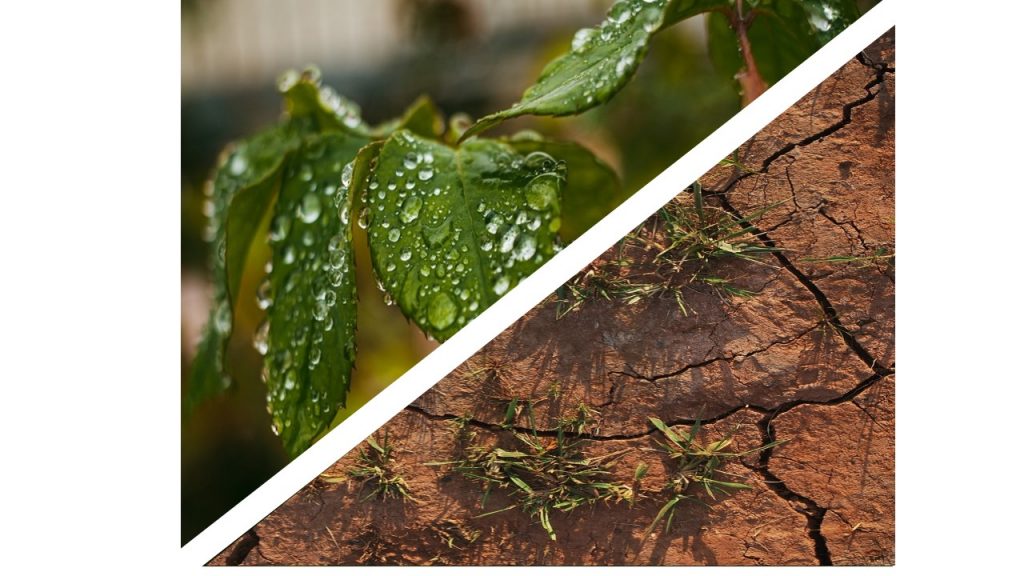
terrestrial water availability, and climatic factors are expected to lead to increasing water constraints on vegetation growth. Pictures: composition made with @Pixabay images
Since the Industrial Revolution, climate change and direct human activities have significantly impacted water, carbon, and energy exchanges between the land surface and the atmosphere across large parts of the planet. Excessive or insufficient water availability can disrupt normal vegetation growth, affecting both natural ecosystems and cultivated plants.
Although recent studies have shown that global vegetation is greening—driven by increased atmospheric carbon dioxide (CO2) concentrations, nitrogen deposition, climate warming, and changes in land‐use and land‐management at regional and continental scales—these processes simultaneously increase water demands on ecosystems to varying degrees. Moreover, global ecosystems are projected to become increasingly vulnerable to droughts associated with climate change in the future. Therefore, it is essential to consider water constraints when evaluating the phenomenon of Earth’s greening.
A recent paper published in Earth’s Future examines vegetation growth in China over the past few decades, considering the combined influences of climate change and human activities. The study provides a comprehensive assessment of recent water constraints and their implications for vegetation trends in China from 1982 to 2015, analyzing the spatiotemporal patterns of the relationship between vegetation growth and water availability.
According to this study, water constraints on vegetation growth were concealed within the overall greening trend in China. More than half of China’s vegetated areas were identified as water deficit regions, and this situation is expected to worsen in the future. “More importantly, our study revealed that climate and atmospheric CO₂ have different weights in regulating vegetation growth across regions with water deficits and regions with water surpluses,” highlights Dr. Yang Song from the Institute of Crop Sciences and the National Nanfan Research Institute (Sanya), Chinese Academy of Agricultural Sciences.
Further analysis shows that climate and atmospheric CO₂ exert varying degrees of influence in governing vegetation growth across different water constraint zones. As water deficits increase, more regions become climate-dominated, while fewer are CO₂-dominated.
“Overall, our findings are crucial for advancing the understanding of China’s land carbon sink in the context of climate change. They highlight the necessity of explicitly accounting for water constraints when assessing the sustainability of vegetation greening trends. As an indirect effect of climate change, water limitations should be incorporated into land surface models to reduce uncertainties in projections of terrestrial water and CO₂ fluxes. This approach will enable decision-makers to better recognize the uncertainties surrounding sustainable vegetation greening and avoid overoptimistic expectations of plant growth’s capacity to sequester CO₂,” concludes Prof. Josep Peñuelas from CREAF-CSIC.
Reference: Song, Y., Penuelas, J., Ciais, P., Wang, S., Zhang, Y., Gentine, P., McCabe, M.F., Wang, L., Li, X., Li, F., Wang, X., Jin, Z., Wu, C., Jin, X. 2024. Recent Water Constraints Mediate the Dominance of Climate and Atmospheric CO2 on Vegetation Growth Across China. Earth’s Future 12(6), e2023EF004395. Doi: 10.1029/2023EF004395.
